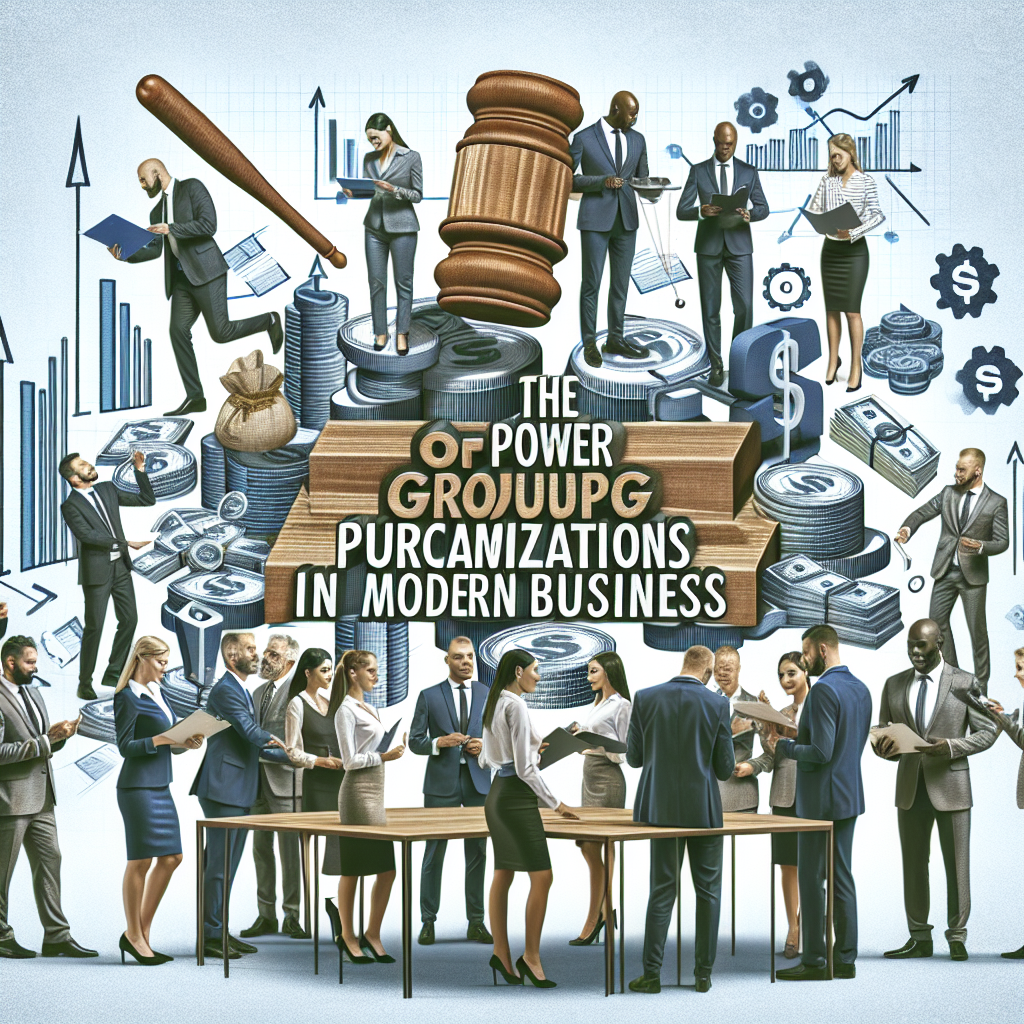Strategic procurement is a critical function within an organization that involves the systematic process of sourcing, purchasing, and managing goods and services in a way that aligns with the overall business objectives. It goes beyond simply buying goods and services at the lowest cost and focuses on creating value, reducing risk, and driving innovation. Strategic procurement requires a deep understanding of the market, supplier relationships, and internal business needs in order to make informed decisions that contribute to the organization’s success.
One of the key aspects of strategic procurement is the emphasis on long-term planning and collaboration with key stakeholders. This involves conducting thorough market research, identifying potential suppliers, and negotiating favorable terms and conditions. By taking a strategic approach to procurement, organizations can optimize their supply chain, reduce costs, and improve overall operational efficiency. Additionally, strategic procurement involves the continuous evaluation and improvement of procurement processes to ensure that they remain aligned with the organization’s goals and objectives.
Key Components of a Strategic Procurement Plan
A strategic procurement plan is essential for organizations looking to optimize their purchasing processes and drive value across the supply chain. There are several key components that are integral to a successful strategic procurement plan. Firstly, it is important to conduct a thorough analysis of the organization’s current procurement processes and identify areas for improvement. This may involve assessing the organization’s current supplier base, evaluating contract terms, and identifying potential cost-saving opportunities.
Another key component of a strategic procurement plan is the development of clear and measurable objectives. These objectives should be aligned with the organization’s overall business goals and should be specific, measurable, achievable, relevant, and time-bound (SMART). By setting clear objectives, organizations can track their progress and ensure that their procurement activities are contributing to the overall success of the business. Additionally, a strategic procurement plan should include a comprehensive risk management strategy to mitigate potential disruptions in the supply chain. This may involve diversifying the supplier base, implementing contingency plans, and monitoring market trends to identify potential risks.
Implementing Cost-saving Measures in Procurement
Cost-saving measures are a critical component of strategic procurement as they can help organizations reduce expenses and improve their bottom line. There are several strategies that organizations can implement to achieve cost savings in procurement. One approach is to consolidate purchasing activities to leverage economies of scale and negotiate better pricing with suppliers. By centralizing purchasing activities, organizations can streamline their procurement processes, reduce administrative costs, and negotiate more favorable terms with suppliers.
Another cost-saving measure is to implement strategic sourcing practices that focus on identifying the best suppliers for specific categories of goods and services. This involves conducting thorough market research, evaluating supplier capabilities, and negotiating long-term contracts to secure favorable pricing. Additionally, organizations can implement cost-saving measures by optimizing their inventory management processes to reduce carrying costs and minimize waste. By implementing just-in-time inventory practices and leveraging technology to track inventory levels, organizations can reduce excess inventory and improve cash flow.
Building Strong Supplier Relationships
Building strong supplier relationships is essential for organizations looking to achieve success in strategic procurement. Strong supplier relationships can lead to improved pricing, better service levels, and access to innovative products and services. One key component of building strong supplier relationships is effective communication. Organizations should maintain open lines of communication with their suppliers to ensure that both parties are aligned on expectations, performance metrics, and potential challenges.
Another important aspect of building strong supplier relationships is fostering a collaborative partnership based on trust and mutual benefit. Organizations should work closely with their suppliers to identify opportunities for process improvements, cost savings, and innovation. By involving suppliers in the product development process and sharing information about future business needs, organizations can create a more collaborative and mutually beneficial relationship. Additionally, organizations can build strong supplier relationships by providing feedback on supplier performance and recognizing suppliers for their contributions to the organization’s success.
Leveraging Technology for Procurement Efficiency
Technology plays a crucial role in driving efficiency and effectiveness in strategic procurement. There are several ways that organizations can leverage technology to improve their procurement processes. One key technology solution is the implementation of e-procurement systems that automate purchasing activities, streamline approval processes, and provide real-time visibility into spending patterns. E-procurement systems can help organizations reduce administrative costs, improve compliance with procurement policies, and enhance overall process efficiency.
Another technology solution that organizations can leverage for procurement efficiency is the use of data analytics tools to gain insights into spending patterns, supplier performance, and market trends. By analyzing data from various sources, organizations can identify cost-saving opportunities, track supplier performance, and make informed decisions about sourcing strategies. Additionally, organizations can leverage technology to improve collaboration with suppliers through the use of supplier portals and electronic communication tools. By providing suppliers with access to real-time information about orders, invoices, and performance metrics, organizations can improve communication and collaboration with their suppliers.
Mitigating Risks in the Supply Chain
Mitigating risks in the supply chain is a critical aspect of strategic procurement as it helps organizations minimize potential disruptions and ensure continuity of supply. There are several strategies that organizations can implement to mitigate risks in the supply chain. One approach is to diversify the supplier base to reduce reliance on a single source of supply. By working with multiple suppliers for critical goods and services, organizations can minimize the impact of potential disruptions such as supplier bankruptcies or natural disasters.
Another strategy for mitigating risks in the supply chain is to implement robust contract management practices that clearly define supplier responsibilities, performance metrics, and dispute resolution mechanisms. By establishing clear contractual terms with suppliers, organizations can minimize potential disputes and ensure that suppliers are held accountable for meeting their obligations. Additionally, organizations can mitigate risks in the supply chain by implementing contingency plans for potential disruptions such as transportation delays or quality issues. This may involve identifying alternative transportation routes, maintaining safety stock levels, or implementing quality control measures to prevent defects.
Measuring the Success of Strategic Procurement
Measuring the success of strategic procurement is essential for organizations looking to track their progress and identify areas for improvement. There are several key performance indicators (KPIs) that organizations can use to measure the success of their strategic procurement activities. One important KPI is cost savings achieved through strategic sourcing initiatives, process improvements, and supplier negotiations. By tracking cost savings over time, organizations can demonstrate the impact of their procurement activities on the bottom line.
Another important KPI for measuring the success of strategic procurement is supplier performance metrics such as on-time delivery rates, quality levels, and responsiveness to customer needs. By monitoring supplier performance, organizations can identify potential areas for improvement and ensure that suppliers are meeting their contractual obligations. Additionally, organizations can measure the success of strategic procurement by tracking key process metrics such as cycle times, approval rates, and compliance with procurement policies. By monitoring process metrics, organizations can identify bottlenecks in their procurement processes and implement improvements to drive efficiency.
In conclusion, strategic procurement is a critical function within an organization that involves the systematic process of sourcing, purchasing, and managing goods and services in a way that aligns with the overall business objectives. By taking a strategic approach to procurement, organizations can optimize their supply chain, reduce costs, and improve overall operational efficiency. Key components of a strategic procurement plan include conducting thorough analysis of current procurement processes, developing clear objectives, implementing cost-saving measures, building strong supplier relationships, leveraging technology for efficiency, mitigating risks in the supply chain, and measuring success through KPIs. By focusing on these key components, organizations can drive value across the supply chain and contribute to their overall success.





